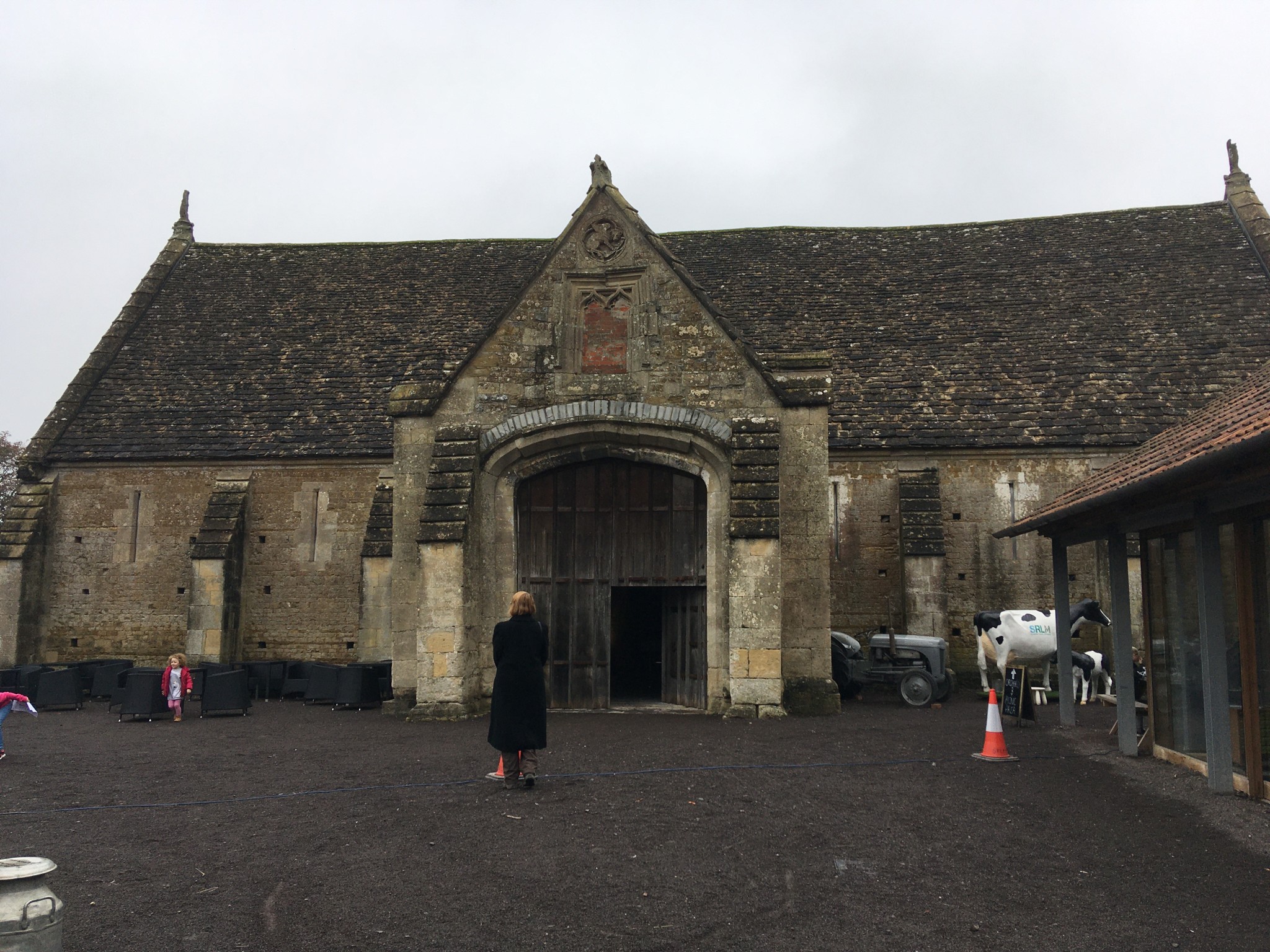Abbey Barn, Glastonbury, Somerset Rural Life Museum
The 14th century Abbey Barn at Glastonbury now forms the north range of a substantially 19th century farmyard, and is part of the Somerset Rural Life Museum. When built it would have been the abbey manor barn, sited just outside the precinct walls of the abbey complex. It would have stood with other agricultural buildings as part of the manor farm or home grange of the abbey. The Abbey Barn is one of only four surviving monastic barns in Somerset associated with Glastonbury Abbey and the only one to stand in such close proximity to the abbey itself. The barn, which is a Listed Building Grade I, was almost certainly constructed by masons from Glastonbury Abbey for the abbey farm. It is of exceptional architectural quality and was clearly intended to reflect the abbey’s important role in the region.
The Abbey Barn is constructed mostly of limestone rubble with random courses of orange marlstone. The roof structure consists of eight raised base-cruck trusses set on horizontal timber baulks and carrying a superstructure of upper crucks. Each dividing roof truss is accompanied by an external stone buttress to provide added support. The resulting building is of seven bays with opposed waggon porches flanking the central bay. The huge arched waggon entrances allowed access to horse drawn wagons which could pass through the barn after unloading without the need to turn. In addition, there are two arched pedestrian entrances in the side walls of each porch. The barn measures 29m in overall length by 10m wide, although the width is doubled at the central bay by the additional width of the two porches. Relief carvings of the symbols of the four evangelists are visible high on the exterior walls.
A replacement of about one third of the timber roof trusses, together with a total re-tiling of the barn and porch roofs, took place during repairs in 1976-77. This provided the opportunity for dendrochronological (tree ring study) dating of the original roof timbers which indicated a felling date for the trees used of between 1343-61 and consequently a mid-late 14th century date for their use in the roof structure of the barn. Glastonbury Abbey was one of the richest foundations in England at the time of the Domesday Book (1086) and it boasted an impressive abbey church and suite of monastic buildings by the 14th century. The Abbey Barn is well documented in manorial rolls and surveys of Glastonbury Abbey which survive from the 14th century onwards.
The present day Abbey Barn is fully accessible to visitors to visitors of the Somerset Rural Life Museum, which occupies the 19th century farmhouse and a collection of new and handsomely refurbished outbuildings around the farmyard.
Given the long history of the building and the number of access points built into it, it is hardly surprising that there is a high level of graffiti, most of it of a fairly rudimentary nature, and almost all clustered around the two huge porches.
The door arches and widow splays of the building are all formed of dressed limestone blocks, providing a good surface for the varied inscriptions, many of which are un-recordable without a ladder: presumably reflecting the activity of graffiti makers when the barn was stacked high with stored crops, making it was easy to climb up.
The open floor of the barn is now used as an exhibition space by the museum, and has been fitted with powerful uplighters around the walls. These illuminate the stonework and lower parts of the barn without detracting from its essential gloom, and the cathedral-like soaring space beneath the wonderful mediaeval roof. In places the uplighters are well sited to allow for graffiti recording with little additional light. In other places, unfortunately, they are just slightly off centre, and the resultant clash of light sources makes clear photography difficult. There is, however, enough to keep the casual graffiti hunter happy!
There are several well formed daisy wheels, a particularly fine pair occurring in the north-eastern porch, just behind one of the iron door stays. All porch areas contained a considerable number of crisscross patterns – many of which may have recorded cartloads entering the building, rather than anything more arcane. There seem to be surprisingly few overtly apotropaic signs – Marian VV symbols seem not to have been found particularly necessary, and few examples were found. A deeply incised letter T – potentially a Tau cross? – appears upright and inverted on surfaces at both porches. The most interesting feature was a set of concentric circles, on the west face of one of the quoin stones in the inner arch of the north-east porch. The graffito, a series of deeply incised concentric circles, has subsequently been defaced, apparently before completion.
Possibly the highest recordable graffito of the day was a large circle high on a window splay in the south wall, between the east end and the porch. Cleanly incised and otherwise apparently untouched, it appeared as fresh as when it was first made.
The final location for graffiti was the east side of the SW porch, which seemed to be particularly rich in personal initials, along with two further examples of the deeply marked letter T, and several damaged and almost effaced daisy wheels – whether through intentional destruction or the scuffing of carts through the years could not be decided.
This is an n interesting site, in a friendly and well-managed location, and is well worth a visit.
Glastonbury Abbey Barn, Somerset Rural Life Museum, Chilkwell Street, Glastonbury, Somerset BA6 8DB.
Opening hours
Tuesday – Saturday (and bank holiday Mondays)
10.00am – 5.00pm
Last entry 4.30 pm
There is a large car-park at the rear.
Report by: Rebecca Ireland
Daisy wheel complete, Daisy wheel defaced, Marian mark, circle, concentric circle, criss-cross, Zodiac, initials, T, R, W, H, F, BH, GH, HI,I H, JM, RF, WC, IHC

